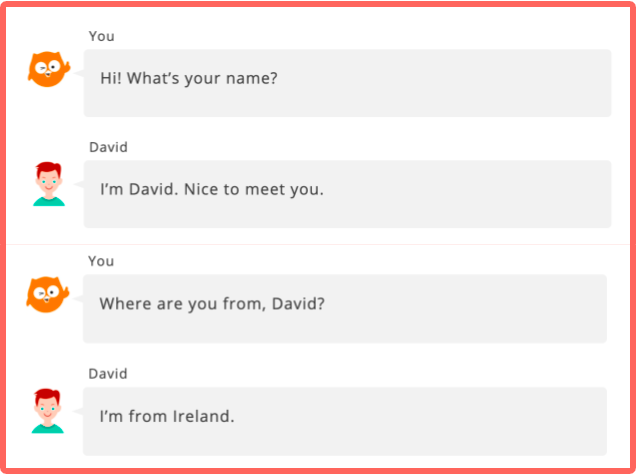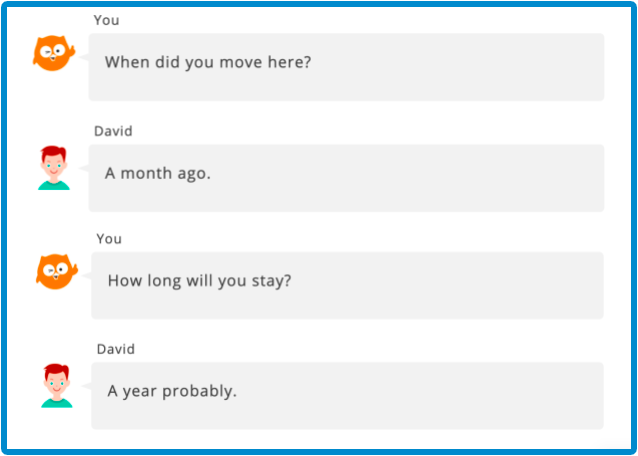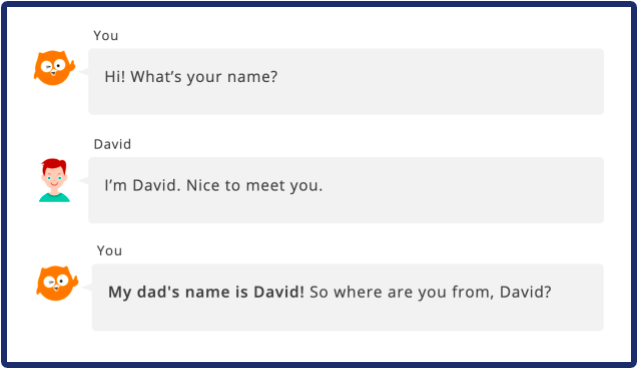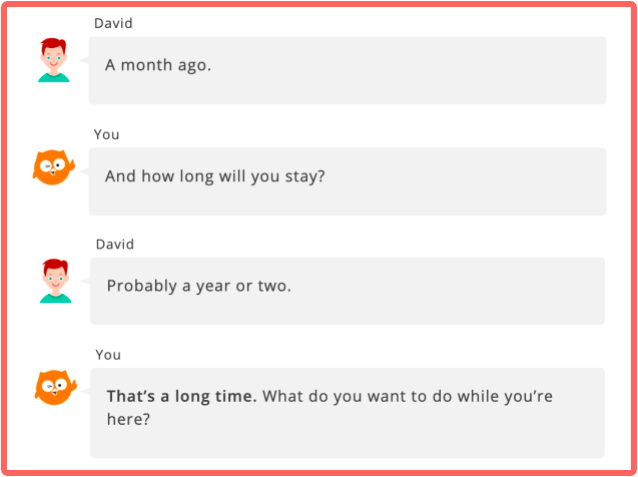One Strategy That'll Make Your Conversations More Natural

You have a new coworker, but he doesn’t speak the local language, so everyone has been too scared to approach him.
One day, you decide to overcome your fear of speaking in English and strike up a conversation. You prepare a short list of questions to ask, and you start asking them one after another:


And all of a sudden, you realize you’re out of questions! Now what?
The Problem
If something like this has happened to you before, don’t worry — you’re not alone!
Some of our students would prepare lists of questions to bring to business lunches with foreign clients. Then they’d go through the questions in the lists one-by-one and wonder why their conversations were so awkward.
This problem affects even highly fluent English speakers! For example, a Chinese student attending a top university in the US admitted that she didn’t feel comfortable having conversations:
“There are times I try very hard to make a conversation... by asking questions or talking a lot by myself, but for some reason, they respond minimally.... Once they find someone else to talk to, their facial expressions suddenly turn joyful and they become talkative.”
Notice that the strategies that she tries are “asking questions” and “talking a lot by myself.” This only leads to conversations that look like this:

Unfortunately, this sort of “zigzagging” between questions and answers doesn’t make for good conversation.
As one of our tutors shared, “I’ve had some students that made me feel like I was being interrogated. They kept asking me questions, and when I responded, they wouldn’t respond to my response. They’d ask another question. It didn’t feel like a conversation.”
So how can we have a conversation that actually feels like one?
Solution
The solution is a basic English conversation strategy: comments.
Short comments will help our conversation partner see that we have interest in their responses, and they’ll make our conversation look more like this:

Let’s try applying this strategy to your conversation with David:

This time, you commented on David’s name before asking the next question.
You can’t comment on all names, but when you do have a chance to do this, and you do it well, it can smooth out the conversation. This is one reason many English-speakers compliment people’s names (“What a lovely name!”).
Let’s continue:

This time, you responded to David’s answer (“I’m from Ireland”) with a comment on how Ireland is a beautiful country. Then, you gave David time to respond to that comment before asking your next question (“When did you move here?”).
By breaking up your question with comments and giving David time to respond to your comment, you have put David at ease and allowed him to actually participate in a conversation.
Here’s one last example:

Notice that this time you moved directly from one question to another: “So when did you move here?” and then “And how long will you stay?” That’s perfectly fine. You don’t have to comment on every response because that may seem a bit forced.
You just want to make sure to balance your questions with comments. This way, your conversation will look more like this:

Notice that:
- There are some sharp turns and some smooth ones.
- There’s more space between some questions (e.g. between questions “Where are you from?” and “When did you move here?”) than in others.
Both of the above help make conversations more natural.
So far, David hasn’t really asked any questions. Sometimes that happens. You won’t always have cooperative conversation partners.
But you can be happy knowing that you tried your best to make a natural conversation with them, and usually, this “smoother” method of conversation will eventually make the other person feel more comfortable asking you questions as well.
Give It a Try!
Now that you know the power of comments, try to practice making some of your own!
To get started, try responding to the following:
- “I’m from Germany.”
- “I have two cats.”
- “I like playing basketball in my free time.”
After you’ve done that, make sure to apply this strategy to some real-world conversations. And if you don’t feel comfortable doing this yet, take a free conversation lesson with our tutors and practice making comments on their answers.



